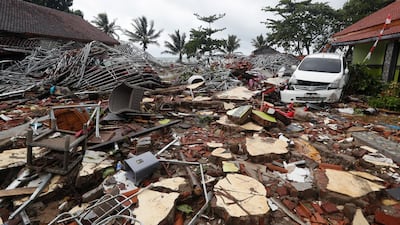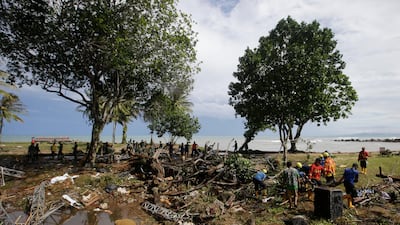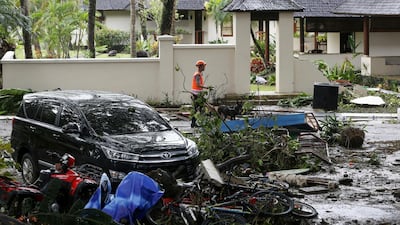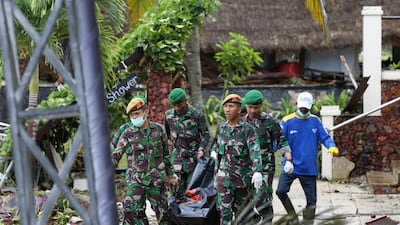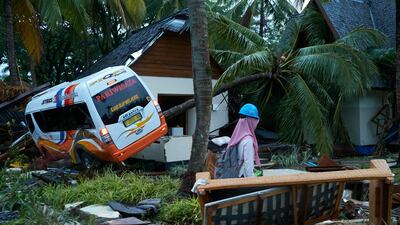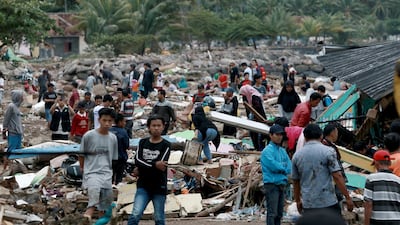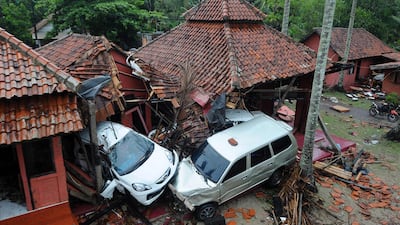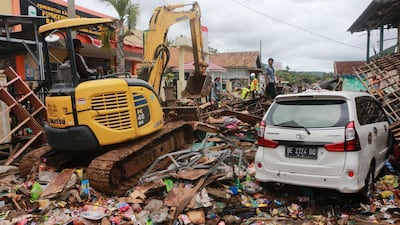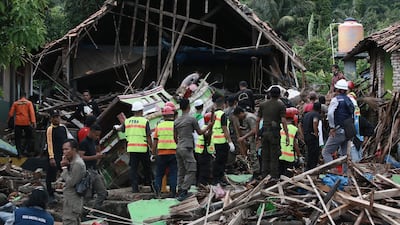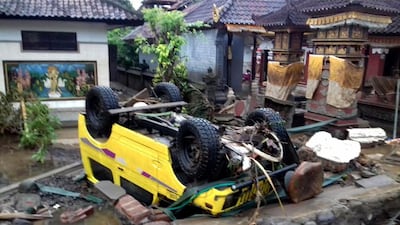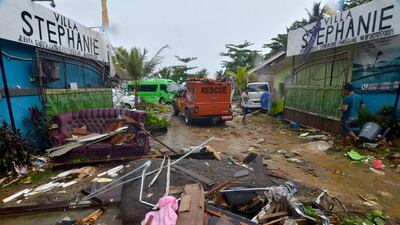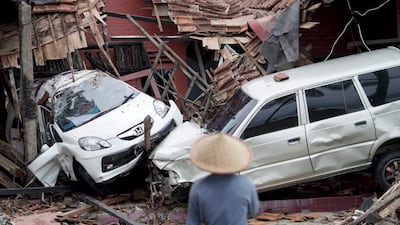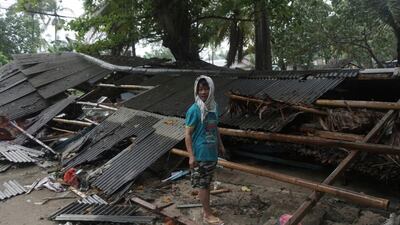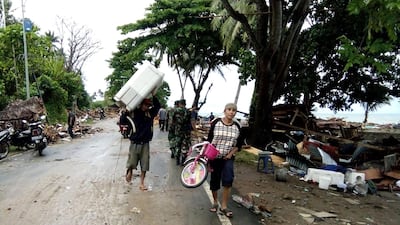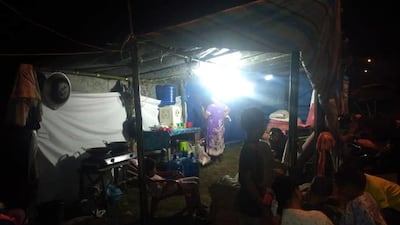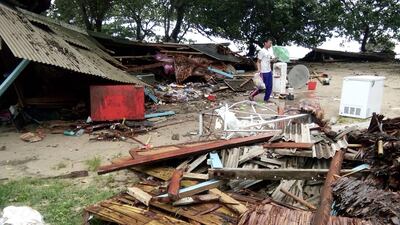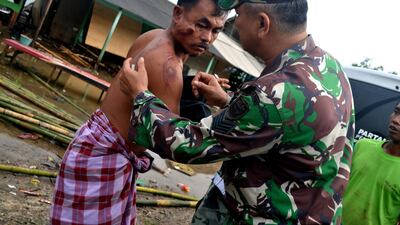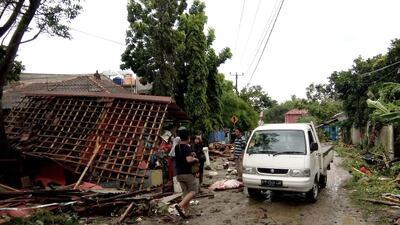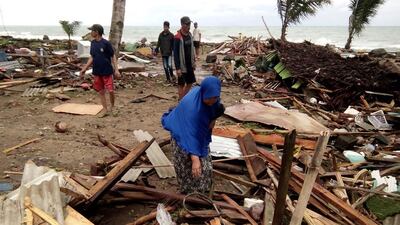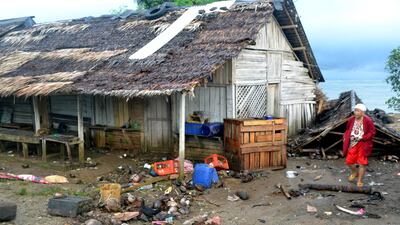Indonesian rescuers battled heavy rains on Monday in a desperate search for survivors after a volcano-triggered tsunami killed at least 281 people.
And now experts have warned that the region could be hit by more tidal waves.
The country's national disaster agency said casualty figures were set to rise as it issued the new death toll – up from 222 – and said more than 50 people were still missing.
Over 1,000 people were injured in the disaster on Saturday evening, the agency added.
Rescue teams continued their search for bodies and survivors on Monday as funerals were held for some of those who perished, including members of a rock group who were performing on a beach when the tsunami struck. Footage of the wave slamming into the stage has been widely shared on social media.
The singer Riefian Fajarsyah is believed to be the only surviving member of the group Seventeen, which has a large fan base in Indonesia, after local media reported that the body of drummer Wisnu Andi Darmawan was found on Monday.
Bassist Muhammad Awal Purbani was buried in Indonesia's cultural capital Yogyakarta, while guitarist Herman Sikumbang, the group's road manager Oki Wijaya and crew member Rukmana Rustam were buried in separate services in their hometowns.
Fajarsyah's wife is missing after the tsunami and he holds out hope that she will be found alive.
"Please pray so Allah can give us a miracle," he told the local broadcaster NET TV.
The tsunami was the third natural disaster to hit Indonesia in six months. An earthquake on the island of Lombok killed more than 500 people in August, and a tsunami and earthquake that hit Sulawesi in September killed more than 2,100.
Indonesia has 127 active volcanoes and lies on the Pacific Ocean’s "Ring of Fire" where earthquakes and volcanic eruptions are frequent.
_______________
Read more:
Death toll rises in Indonesian 'volcano tsunami'
Dubai sends aid to Indonesia earthquake and tsunami victims
Indonesians in UAE pray for their families after deadly disaster
_______________
Saturday's tsunami appeared to have been caused by an underwater collapse of part of the Anak Krakatoa volcano, said David Rothery of the UK's Open University.
Anak Krakatoa is a new island that emerged around 1928 in the crater left by Krakatoa, whose massive 1883 eruption killed at least 36,000 people.
The volcano has been particularly active since June, said Jacques-Marie Bardintzeff at the University of Paris-South.
Anak Krakatoa, in the Sunda Strait between Java and Sumatra islands, is close to densely populated areas.
And although the tsunami was relatively small, Richard Teeuw of the University of Portsmouth said: “Such waves – laden with debris – can be deadly for coastal communities, especially if there is no warning.”
Simon Boxall of Southampton University added that the region was also in spring tide, “and it would appear that the wave hit some of the coastal areas at the highest point of this high tide, exacerbating the damage done”.
It also struck at night, catching people by surprise.
“The time between cause and effect was a few dozen minutes, which was too short to warn the population,” Mr Bardintzeff said.
“Tsunami warning buoys are positioned to warn of tsunamis originated by earthquakes at underwater tectonic plate boundaries,” Mr Rothery said.
“Even if there had been such a buoy right next to Anak Krakatoa, this is so close to the affected shorelines that warning time would have been minimal given the high speeds at which tsunami waves travel.”
“The likelihood of further tsunamis in the Sunda Strait will remain high while Anak Krakatoa volcano is going through its current active phase because that might trigger further submarine landslides,” Mr Teeuw said.
Warning: this video contains footage some of our readers might find upsetting
Mr Bardintzeff also warned that people “must be wary now that the volcano has been destabilised”.
Mr Teeuw said sonar surveys would now be needed to map the seabed around the volcano, but “unfortunately submarine surveys typically take many months to organise and carry out”.
